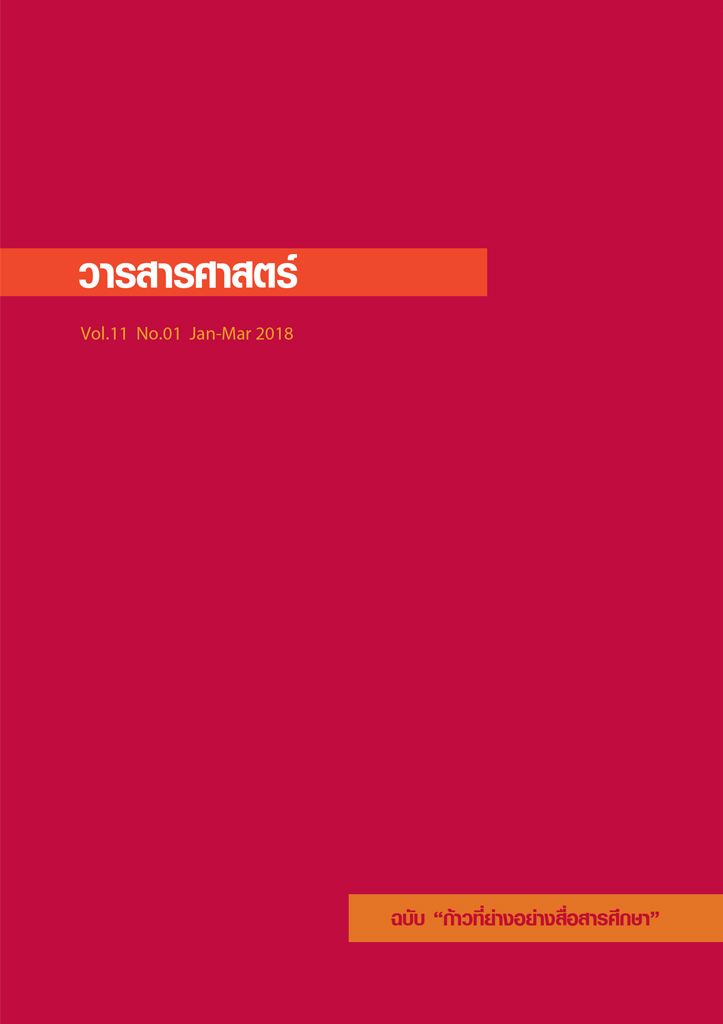บทความพิเศษ Asian Creative Counter Flows: To Market...To Market from the Periphery to the Centre
คำสำคัญ:
-บทคัดย่อ
This paper is an attempt and hope to provide a realisation that Asia has fnally managed to join the ranks of global media players and take on the mantle of being recognised as one of the cultural/media capitals of the world. This paper is also a coming out of Asian creativity and puts Asia at the epicentre, not at the global peripherals and thus marking a sure track towards sharing a piece of the lucrative global media marketplace. This spatial metaphor also reminds us all that Asia was once peripheral economy in the global content industry receiving a one-way fow of creative products from global media leaders such as US-Western Europe and non-Western cultural capitals in Latin-America as well as cultural content for the diaspora market. This one way fow has for decades fuelled the economy of the leading media exporters, injecting about USD 2,250 billion into their economies, creating 29.5 million jobs (UNESCO yearly report, 2015).
Having established that, what then created the imbalance, the stance of the late starter which could have launched the creative industries in the Asian highly cultural everyday lives much sooner. Everybody love to point to the wicked West but perhaps it is easier looking into our historical baggage to provide a contributing factor to the late start-up and entry in the global media marketplace while other spatial leaders maintained their economic lead in the global entertainment and media industries (E&M) industries.
Having said that, one needs to pause and refect at what could possibly made non-starters or late bloomers of this open air cultural life of Asia.
เอกสารอ้างอิง
Flew, T. (2005), “Creative Economy”, in Hartley, J. (ed.), Creative Industries, Malden, MA: Blackwell.
Florida, R. (2002), “The Experiential Life”, in Florida, R. (ed.), The Rise of the Creative Class: and How It’s Transforming Work, Leisure, Community and Everyday Life, New York: Basic Books.
________. (Dec 28, 2015), “The Global Creative Economy Is Big Business”, retrieved from https://www.citylab.com/work/2015/12/the-global-creative-economy-is-big-usiness/422013/
Hamzah, A. (2016), “The Media Ecosystem and the Economics of Creativity: Recent Development in Korean and Malaysian Creative Industry”, KOSASA Biennial International Conference, Manila, Philippines
Haseman, B. (2005), “Creative Practices”, in Hartley, J. (ed.), Creative Industries, Malden, MA: Blackwell.
Howkins, J. (2001), The Creative Economy: How People Make Money from Ideas, London: Penguin.
Kellner, D. (2004), Media Spectacle, London: Routledge.
Mahbubani, K. (2008), The New Asian Hemisphere: The Irresistible Shift of Global Power to the East, New York: Public Affairs, Perseus Group.
Mattelart, A. (1999), “Transboundary Flows of Western Entertainment across the Iron Curtain”, Journal of International Communication, 6 (2): 106-121.
McQuail, T. (2010), Global Communication: Theories, Stakeholders, and Trends, London: Wiley & Blackwell.
Peters, M. (2009), “Introduction: Knowledge Goods, the Primacy of Ideas and the Economics of Abundance”, in Peters, M. et al. (eds.), Creativity and the Global Knowledge Economy, New York: Peter Lang.
Redner, H. (2004), Conserving Cultures: Technology, Globalization, and the Future of Local Cultures, Oxford: Rowman & Littlefield
Schiller, H. (1976), Communication and Cultural Domination, White Plains: New York International Arts and Science Press.
Shuaib, A. and Enoch, O. (2012), “Creative Industry: Its Involvement in Business World”, Advances in Asian Social Sciences (AASS), 4 (2): 1-6.
Seo, M. (n.d.), “Lessons from K-pop’s Global Success”, retrieved from https://www.korea-marketing.com/lessons-from-k-pops-global-success/
Tehranian, M. (1999), “Foreword”, in Kamalipour, Y. (ed.), Images of the US around the World: A Multicultural Perspective, Albany: State University of New York Press.








